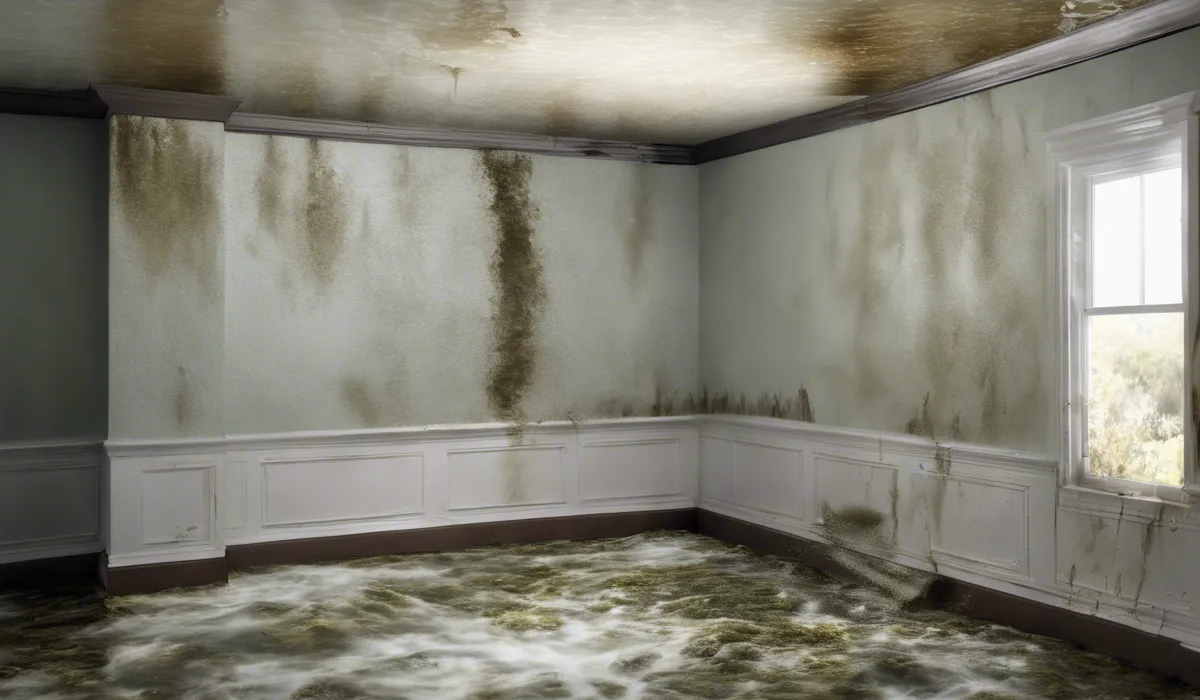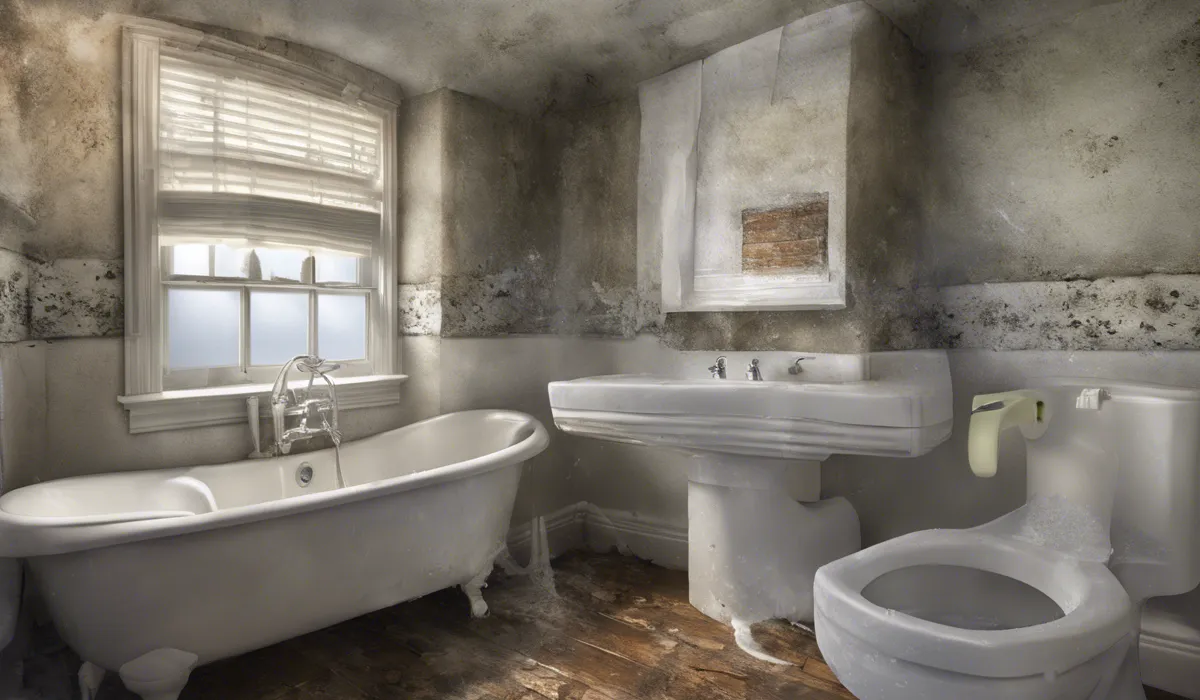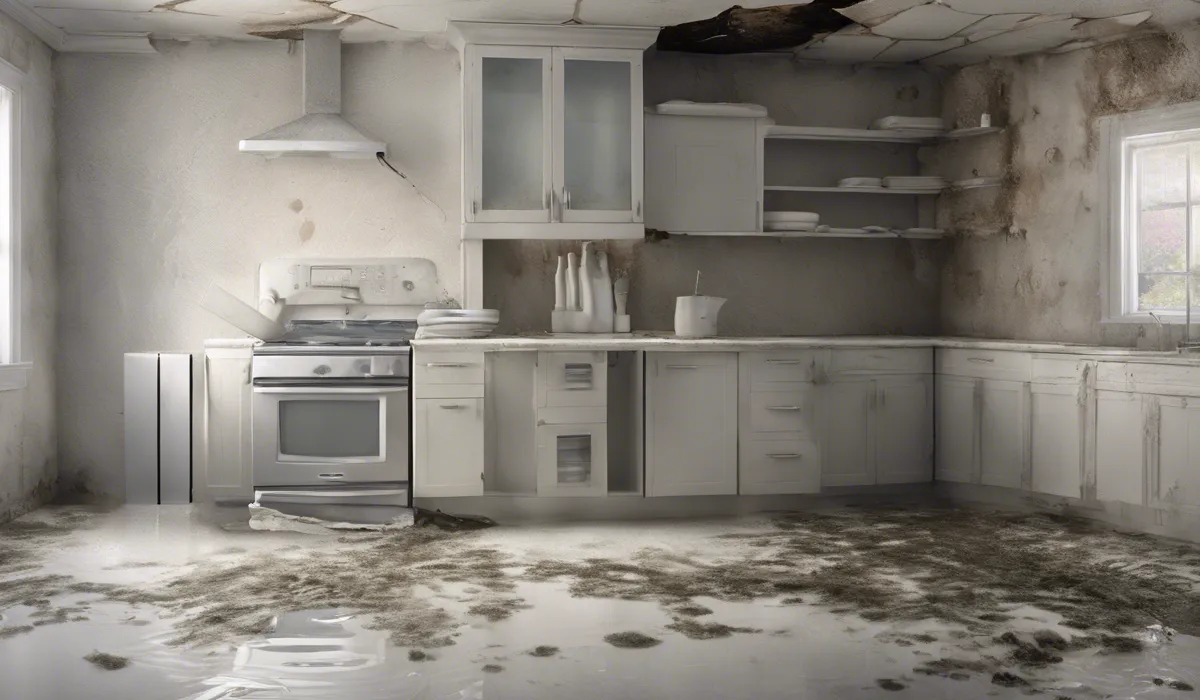To check for mold after water damage, inspect areas with moisture for visible signs of mold growth, such as discoloration or fuzzy patches. Use your nose to detect musty odors. Check hidden spaces like behind walls or under carpets, and consider a mold test kit or professional assessment for confirmation.
Assessing the Extent of Water Damage

Identifying the Water Damage Source
Before tackling the aftermath of water damage, pinpoint where the problem began. This could range from a burst pipe to a natural disaster.
Identifying the source is crucial as it helps in preventing further damage and aids in the mold remediation process.
Types of Water Damage
Water damage comes from different sources, and it’s essential to know the type you’re dealing with.
Clean water poses the least risk, gray water may contain some contaminants, and black water is hazardous. The type of water informs the urgency and methods for dealing with mold.
Visual Signs of Mold
Look for telltale signs of mold on walls, ceilings, and floors. Mold appears as discoloration or fuzzy patches. These signs are often indicators of a larger issue and necessitate immediate action.
Inspecting Hidden Moisture Havens
Areas not visible to the naked eye can harbor mold. Inspect behind wallpaper, under carpets, and within your HVAC system. These hidden spots often accumulate moisture and foster mold growth out of sight.
Using Moisture Meters
Moisture meters are invaluable tools that detect water accumulation not apparent on the surface. They provide a more complete picture of water damage and potential mold issues.
Documenting Damage for Insurance
Keep a detailed record of all damage for insurance claims. Documenting the extent and severity of water damage and mold can help ensure you receive the appropriate compensation.
Mold Detection Techniques

Understanding Mold Growth Conditions
Mold thrives under certain conditions: adequate temperature, moisture, and time. Being aware of these conditions can help you pinpoint potential mold problems before they escalate.
Visual Mold Inspection
Conduct a thorough visual inspection if you suspect mold. Look for discoloration or slimy textures on surfaces. This is often the first step in detecting a mold issue.
Musty Odor Detection
A musty smell is a strong indicator of mold presence. Trust your nose when searching for mold as it can lead you to concealed mold growth.
Testing Kits and Professional Inspections
DIY mold testing kits provide a first glance at potential mold, but professional inspections offer a more comprehensive assessment.
Consider the pros and cons of each when checking for mold.
Thermal Imaging for Hidden Moisture
Thermal imaging is a cutting-edge technique that can reveal hidden moisture and mold. This non-invasive method can detect temperature differences caused by moisture, indicating potential mold growth areas.
Air Quality Testing for Mold Spores
Air quality testing is vital for detecting airborne mold spores. This test can uncover mold presence even when there are no visible signs and is crucial for ensuring a healthy living environment.
Remediation and Prevention Strategies

Immediate Actions Upon Finding Mold
Once mold is detected, act quickly by drying out the area and removing contaminated materials. These steps prevent further mold growth and mitigate health risks.
Ensuring Proper Ventilation
Good ventilation is essential in preventing mold. It helps to reduce moisture levels, one of the key factors in mold growth.
Cleaning and Disinfecting
After addressing moisture issues, clean and disinfect the affected areas. Both natural solutions and chemical disinfectants can be effective, depending on the extent of the mold and personal preferences.
Professional Mold Remediation Services
Sometimes, the mold issue is too extensive for a DIY approach. In such cases, hiring professional mold remediation services ensures that mold is safely and effectively removed.
Long-Term Prevention Tips
Maintain low humidity levels, fix leaks promptly, and conduct regular inspections to prevent mold from returning. These long-term strategies are key to keeping your environment mold-free.
Safe Return After Mold Removal
Understand when it is safe to return to a water-damaged property after mold has been removed. Ensure all issues have been thoroughly addressed and that air quality tests confirm the absence of mold spores.
FAQs About Checking for Mold After Water Damage
How can I visually identify mold after water damage?
Look for visible signs such as discoloration, fuzzy patches on surfaces, or any irregularities on walls, ceilings, and floors, particularly in areas with moisture.
What are the common signs of mold in hidden spaces?
Hidden mold can often be detected by a musty odor or by visible signs in adjacent accessible areas. Peeling or bubbling paint and warped materials can also be indicators.
Can I use smell to check for mold presence?
Yes, a musty or earthy smell often indicates the presence of mold, especially in areas with previous water damage or high humidity.
How can I check for mold under carpets or behind walls?
For carpets, look for discoloration or odors; for walls, use a moisture meter to detect high moisture levels that can promote mold growth, or consider cutting a small inspection hole.
Should I use a mold test kit or hire a professional for mold assessment?
For an initial assessment, a mold test kit can be helpful. However, for thorough evaluation and remediation, especially after significant water damage, hiring a professional is recommended.
Final Thoughts
To effectively check for mold following water damage, thoroughly inspect moist areas for visible mold signs, such as unusual stains or textures.
Trust your sense of smell to detect musty odors indicative of mold presence. Don’t forget to examine concealed spaces, and for a definitive determination, consider using mold test kits or enlisting the expertise of professionals.
